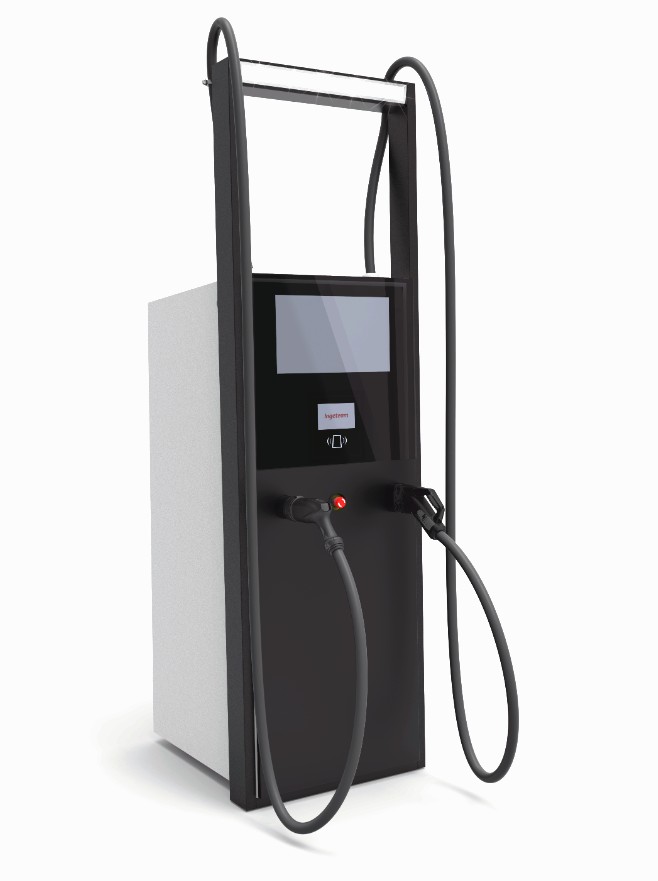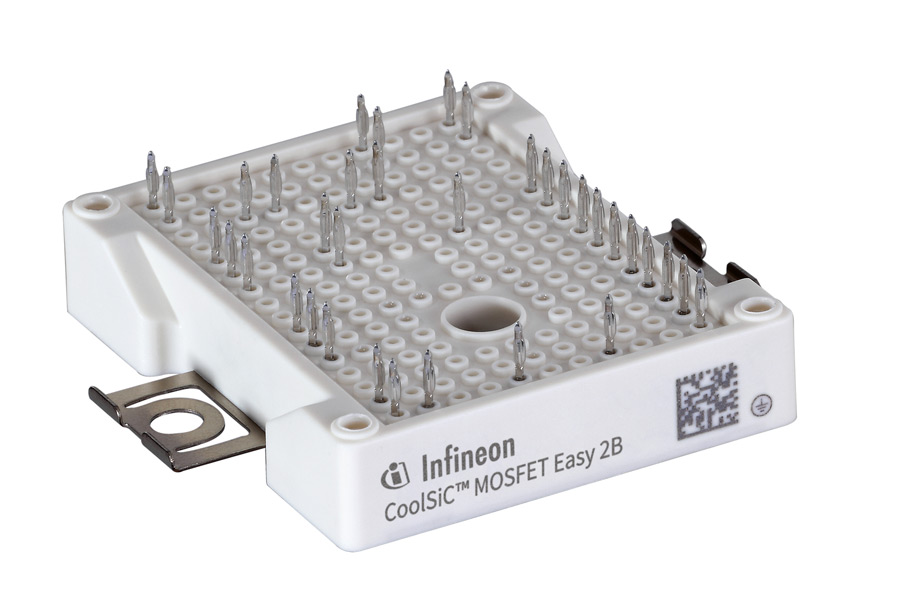News: Microelectronics
8 July 2020
Infineon’s CoolSiC MOSFETs used in Ingeteam’s 400kW converter
Power conversion group Ingeteam S.A. of Bilbao, Spain and Infineon Technologies AG of Munich, Germany have teamed up to target ultra-fast electric vehicle (EV) charging.
Rated at 400kW, Ingeteam’s INGEREV RAPID ST400 converter is based on Infineon’s CoolSiC silicon carbide metal-oxide-semiconductor field-effect transistors (MOSFETs) in an EasyDUAL 2B housing. A single charging point implements eight of Infineon’s FF6MR12W1M1_B11 modules. Depending on the charging capabilities of the respective car, an EV now only needs to stop for a minimum of 10 minutes for an 80% battery charge (comparable to refueling a conventional car with internal combustion engine).

Picture: Ingeteam’s INGEREV RAPID ST400 converter is based on CoolSiC MOSFETs in an EasyDUAL 2B housing. A single charging point implements eight of Infineon’s FF6MR12W1M1_B11 modules.
The design of the INGEREV RAPID ST400 converter has proven to operate successfully under real-world conditions. Already last year, the first project integrating this technology was developed, implemented and commissioned by IBIL (the leading recharge technology services company in Spain) for Repsol, the multi-energy provider and leading Spanish petrol station operator. Located at Ugaldebieta in the Bay of Biscay region, it was commissioned in October 2019 as a lighthouse project in the field of electro-mobility. The facility on the heavily frequented A-8 motorway features four ultra-fast charging points. These units guarantee optimal distribution of the available power between the four vehicles that can be connected simultaneously. More importantly, the technology has operated without any major downtime from the start.

Picture: Europe’s most powerful 400kW DC charger.
“SiC enables high switching speeds with lower switching losses. This results in shorter charging times and charging stations that are about one-third smaller, since considerably fewer components are required for cooling,” notes Dr Peter Wawer, president of Infineon’s Industrial Power Control division. “With its physical properties, SiC can make an important contribution to electric mobility,” he adds. “As various consumer studies show, the acceptance of electro-mobility very much depends on the availability of an efficient fast-charging infrastructure. We have proven that we can provide the underlying technology.”









